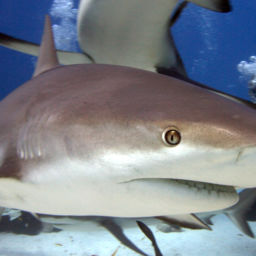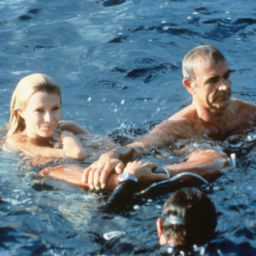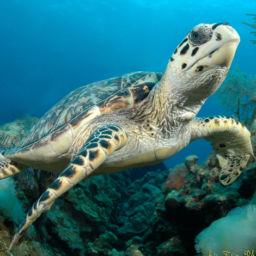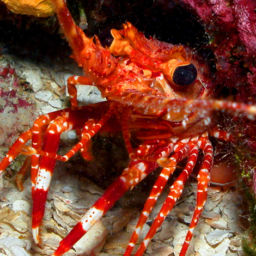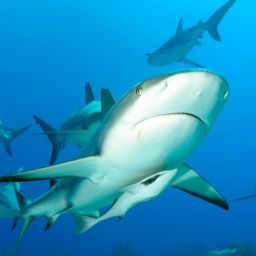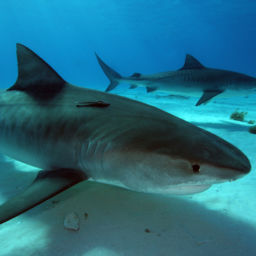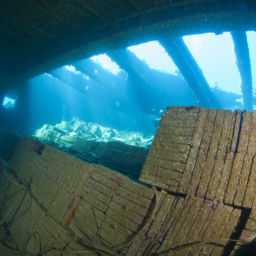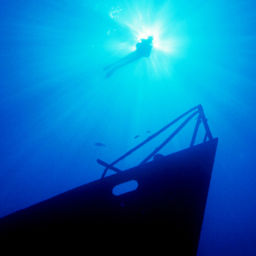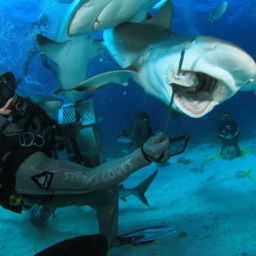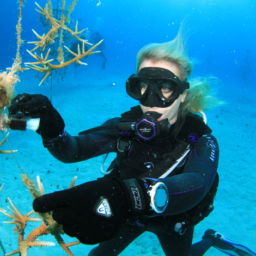By C. David Conner
The shock of what I was about to do hit when I noticed a dozen Caribbean reef sharks swimming slow circles around the boat, dorsal fins cutting the surface in eager anticipation of food. As I stood on the boat’s edge looking down, the words of the divemaster sprang to mind, “make your way down as quickly as possible.” I hovered at the edge of the precipice, for the first time about to interact with a species that had haunted my nightmares since childhood. Around 50 feet below, the ocean floor was a mixture of rock and coral with clear patches of sand. The sharks knew this routine well as they waited for us to enter and then swam in a ragged line to the feeding ground. Soon we came to a clear, sandy area almost an acre in size. The divemaster pointed to each person and then to a spot on the sand.
We were to kneel and remain still, having been warned that sudden movements might attract unwanted attention from these curious animals. After a few minutes the feeder appeared. Even more sharks swam behind a crate he towed containing chunks of dead fish. The man’s only protection was a suit of chainmail, a helmet and a metal pole about the length of a baseball bat used to impale chunks of fish and ward off any aggressive sharks. We weren’t much farther than an arm’s length away from the feeding and sharks soon surrounded everyone. I now noticed their grainy skin lightened from bluish-gray at the top to white near the lower half of their bodies. One swam a few feet above me; cat-like eyes darting everywhere. Around and above us they circled. I felt a thump on my shoulder as another came from behind to get into the fray for a portion of fish; its skin felt as dense as a car tire. We watched an age-old ballet as the big sharks fed and left scraps for the smaller fish. Although the dive lasted only 45 minutes it left a life-long impression.


